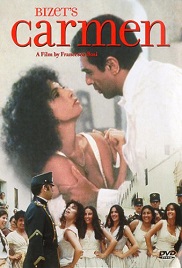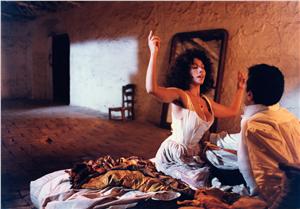The History of Carmen:
The Opera is set in the year 1820, in Seville, Spain. Carmen is written in French but incorporates the flavor of Spain. Carmen is an “opera comique” which contains spoken dialogue between the songs.
Commissioned for the Opera-Comique in Paris, Carmen was initially labeled as “immoral” when it was first performed in 1875. An official of the Opera-Comique worried that no audience would see such a “debauched” opera. One of the directors of the Opera-Comique protested:
Isn’t [Carmen] killed by her lover? — And that background of thieves, gypsies, cigar-makers — At the Opéra-Comique, a family theatre! The theatre where marriages are arranged! Every night five or six boxes are taken for that purpose. You will frighten off our audience — It’s impossible. Bizet and His World by Mina Curtiss, Alfred A. Knopf, New York, 1958, p. 351.
The producers pressuring Bizet to alter the tragic ending, but he resisted. Ibid at 383.
The premiere itself did not go particularly well, and the reviews of both critics and the audience did not reflect the opera’s later popularity and critical acclaim. See New York City Opera Project: Carmen: Critical Reception. Bizet died soon after its first short run never knowing how universally loved this opera would be. In fact, the opera was performed only 48 times the first year: a far cry from modern day, where it is currently listed by OPERA America as the number one most produced opera in the 2000-2001 season.
The Characters:
The characters in Carmen brought a new dimension to operatic characters.
Don Jose: Once a loyal soldier and faithful lover to his childhood sweetheart, Mercedes, Don Jose, succumb to an uncontrollable passion for Carmen. He gives up everything for her: his career in the army; his good name; his family; and Mercedes. However, Carmen is still not faithful. Consumed by jealousy, he kills her.
Carmen: Carmen is a complex and fascinating character. It has been said that her character has so many facets that each different actress who plays the role is able to give the character a distinctive interpretation. Carmen has been described as “willful, capricious, sensuous … and eternally fascinating.” Melbourne Opera, Notes to Carmen. Carmen is not a self-destructive figure…she does not chase men; they chase her. “She is fatalistic and hedonistic, living entirely in the present moment. Her beauty unintentionally entraps men, who are then led to their downfall by their own misguided ideas of love. Carmen’s character is best illustrated in the card-playing scene, in which she accepts the premonition of death as unavoidable.” Webster’s Online Dictionary – Extended Definition of Carmen.
Carmen and Don Jose have three duets, each of which represents a stage of their relationship: seduction, conflict, and tragic resolution. By not singing the duets in the typical French or Italian style (where the two singers merge their voices together), Bizet is able to demonstrate the incompatibility of their relationship.
Bullfights:
Bullfights are historic entertainment in Spain. Many people find them to be grotesque barbaric rituals in which bulls are tortured and then killed. In 2010, Catalonia, a section of Spain banned bullfights.
A bullfight is held in a large arena. The animal is first enraged by the picadors and then a tendon in his neck is cut so that he cannot completely raise his head. Otherwise, the Matadors would get gored too frequently. After the picadors have injured the bull, the matador enters the ring and taunts the bull with a red cape. The most popular matadors perform their cape work with great grace and skill, permitting the bull to come close to them but not to injure them. After the passes with the cape, three banderilleros thrust decorated wooden barbs into the bull’s back, further injuring the animal and preparing him for the matador’s sword. Finally, the matador comes back at the bull with more graceful and daring cape work. He eventually kills the bull with a sword thrust between the bull’s shoulders. The ultimate question in a bullfight is whether the bull, weakened as he is, will be able to gore the matador before the bull is killed.
Aficionados (the name for people who love bullfights) appreciate the style with which the matador confronts the bull. They also savor the style with which the bull confronts his death. In the first and the last, bullfight seen by the authors, the bull was valiant. But he was so scared that he urinated most of the time he was in the ring. It left us feeling complicit in the torture and killing of an innocent animal.
France and Spain:
The Spanish Civil War lasted from 1820-1823, ending with the Battle of Trocadero. Royalists and liberals fought against each other, with France assisting the royalists. The war itself started after a new constitution, looking to replace absolute monarchism with a constitutional monarchy, was rejected by Ferdinand VII. This forced increasingly dissatisfied soldiers, citizens, and revolutionaries, to take action.
The Battle of Trocadero occurred in 1823, and with the help of the French, the royalists were able to subdue the rebels. Backtracking on his promises of amnesty for the revolutionaries, Ferdinand sought revenge for the uprising and his imprisonment and ruled with a ruthless hand.



